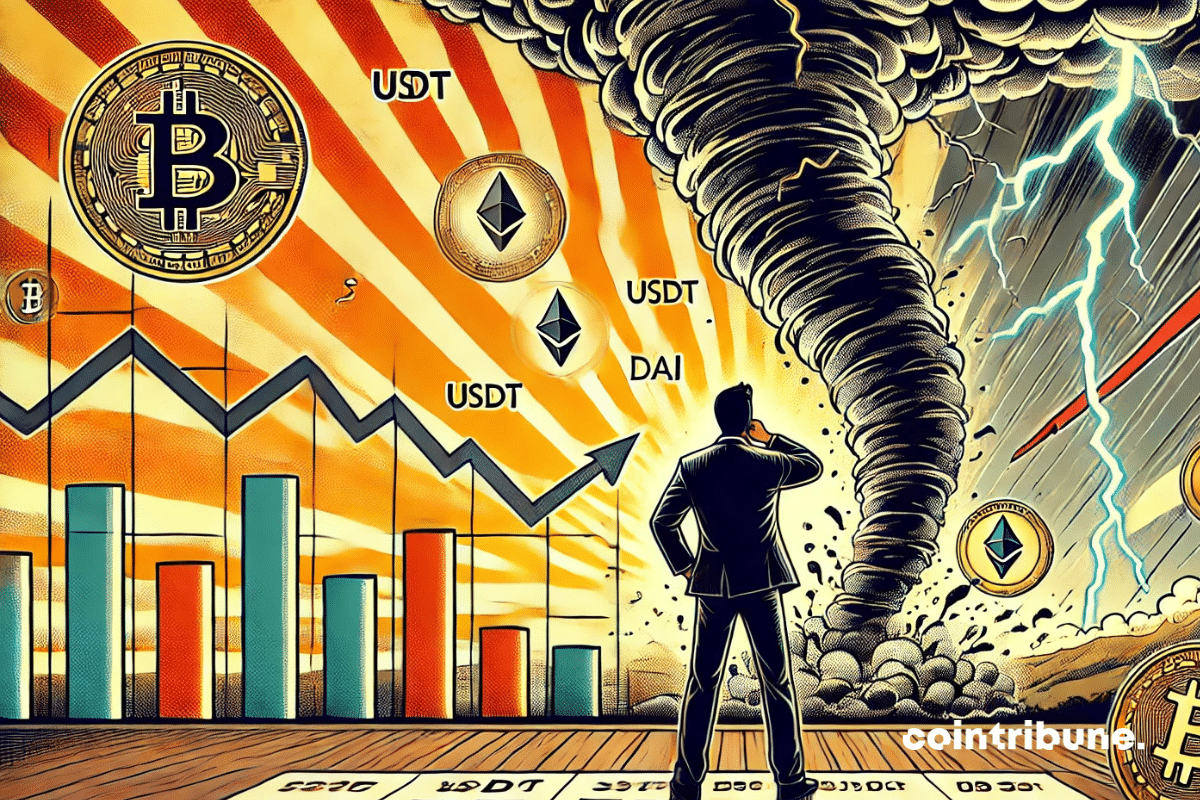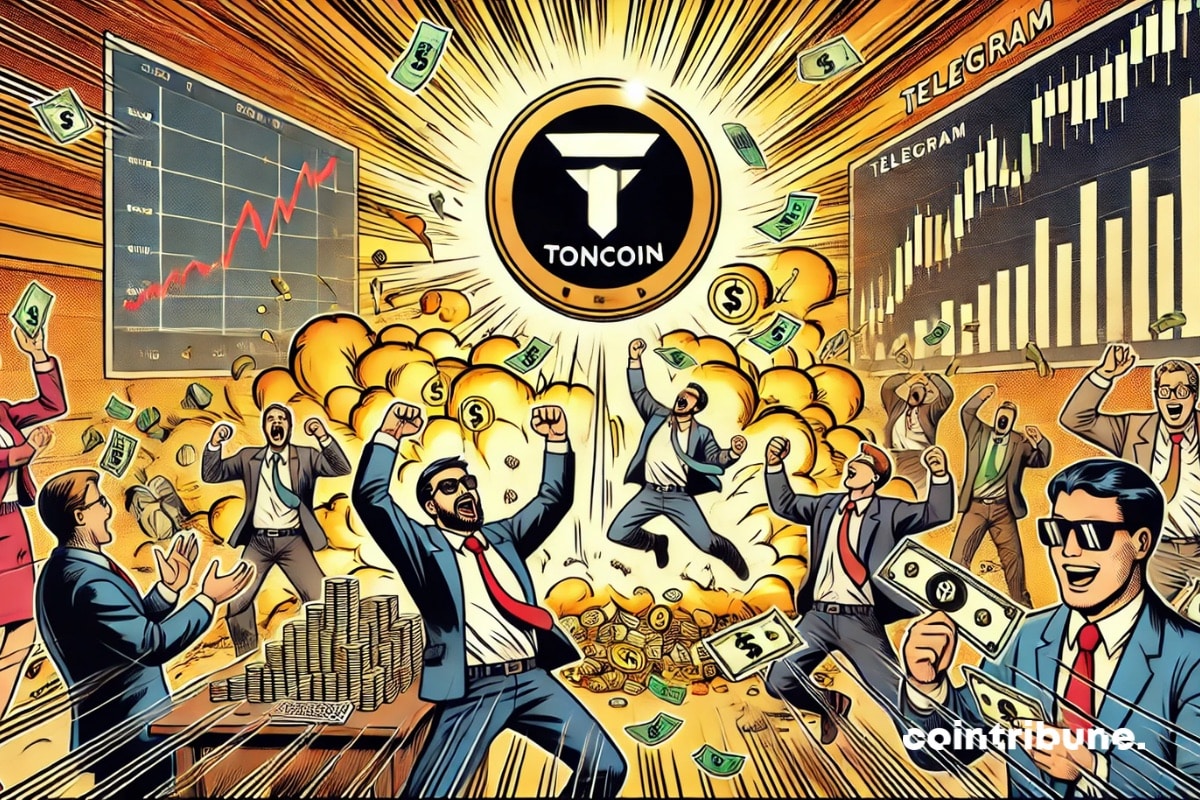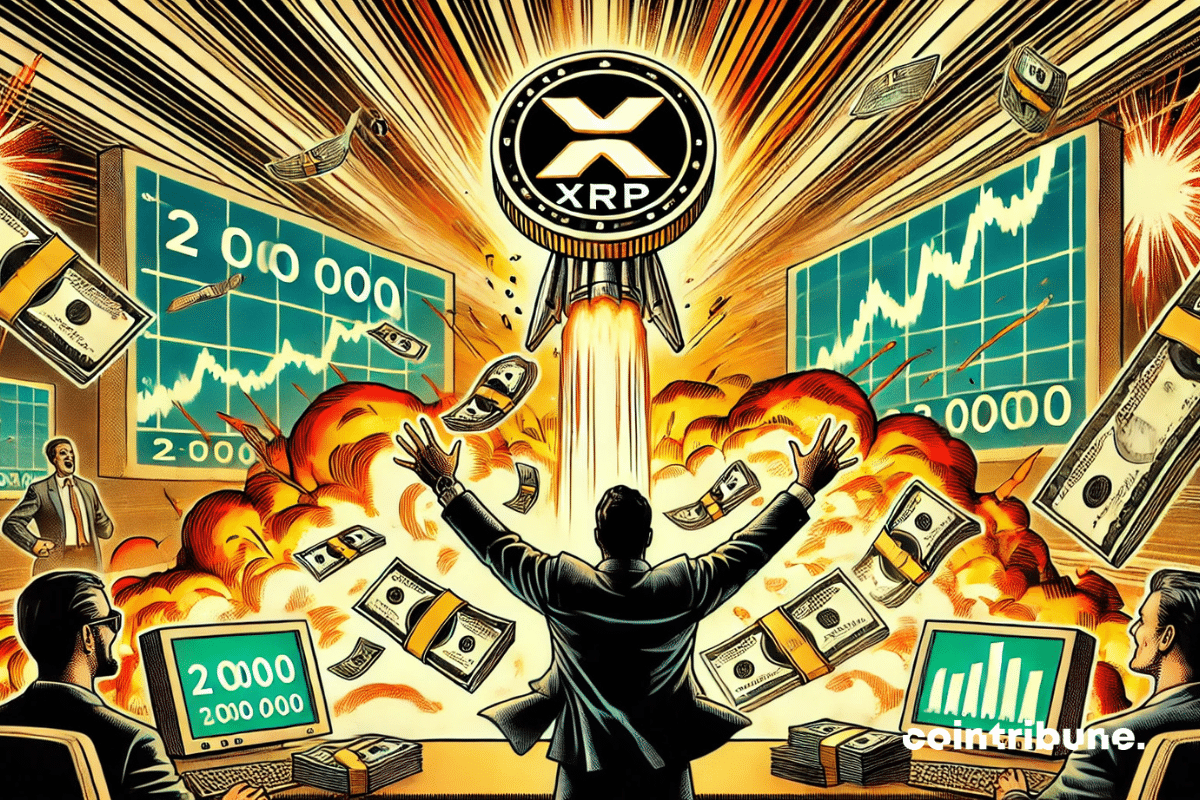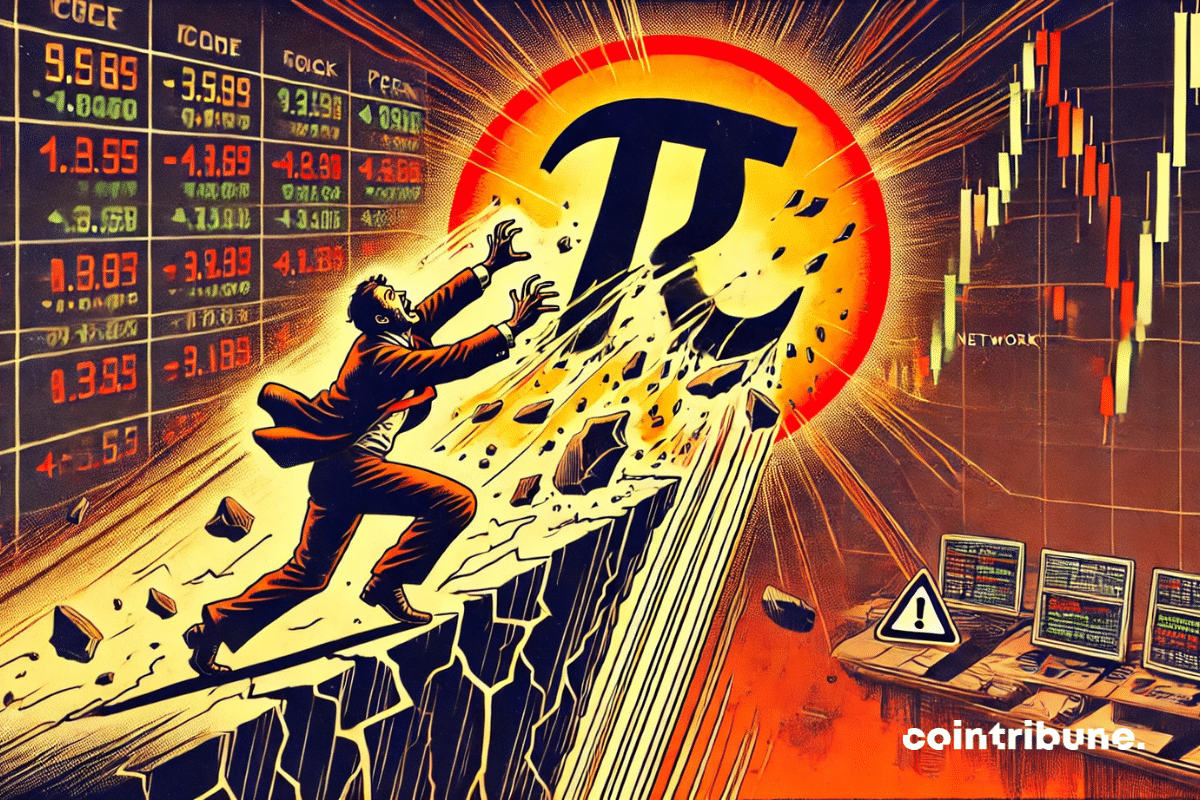They were said to be dead, those brave SHIB. But the team is barking, burning tokens in batches and preparing a revenge that could bite much harder than expected. It's going to bleed!
Crypto News
Bitcoin, fueled by post-election euphoria, reached a peak of $108,000 before falling below $80,000. Global economic instability and rising trade tensions contribute to increased volatility. Despite pro-crypto rhetoric, Donald Trump is adopting a protectionist policy that worries investors. Amid fears of recession and monetary uncertainty, the crypto market wavers in the face of macroeconomic turmoil.
Bitcoin is currently showing signs of recovery after a period of high volatility. Despite a 30% drop from its historic peak in January, the queen of crypto seems to be finding some stability. Several key factors are emerging, suggesting a return of BTC to $90,000 in the coming days.
For decades, the US dollar has dominated international trade and has established itself as an essential global reserve. However, this absolute reign is now challenged by the BRICS bloc. As a result, geopolitical tensions and the rise of cryptocurrencies are pushing several countries to seek alternatives to the greenback. Bitcoin and stablecoins are emerging as instruments capable of circumventing the supremacy of the dollar, but paradoxically, they could also reinforce its influence.
The crypto market is buzzing, traders are accumulating, stablecoins are soaring. A prelude to a bullish party or the swan song before an unexpected crash? The riddle persists.
Since the announcement of the release of Pavel Durov, founder of Telegram, Toncoin (TON) has experienced a spectacular rise of over 50%. The crypto market, responsive to good judicial news, reacted immediately to the delight ofTON enthusiasts. This remarkable rebound highlights the influence of iconic figures and their impact on the cryptocurrency market.
As gold shatters its historical records by nearing $3,000 an ounce, Bitcoin wavers. The Bitcoin/gold ratio, a symbolic pillar for twelve years, has just broken its upward trend. An alarming signal for crypto enthusiasts? Amid geopolitical tensions, aggressive trade policies, and contrasting ETF flows, the financial landscape is fracturing. Is the reign of "digital gold" threatened by the renewed shine of the precious metal?
Crypto ETFs are crashing down like an uncontrollable wave. Avalanche joins the dance, but history has taught us that markets sometimes have a short memory... and a brutal correction.
Bitcoin continues to challenge traditional financial markets and generates increasing interest among investors. For several years, it has been compared to gold, often presented as its digital equivalent. But this time, Tom Lee, influential analyst and co-founder of Fundstrat, goes further and claims that Bitcoin will become the best-performing asset.
A wind of dissent is blowing over Washington. A legislator is directly confronting Donald Trump's initiative to create a strategic reserve of Bitcoin and other cryptocurrencies. For him, this project is nothing visionary: it is more of a dubious maneuver, built on unstable ground where private interests and public funds intertwine.
After a period of slowdown, XRP is making headlines again with a surge in its on-chain activity. The network has surpassed 2 million transactions, a threshold that, in the past, has often been a precursor to renewed interest from investors.
In a constantly shifting crypto market, Pi Network is at a decisive turning point. While investors were waiting for signs of stabilization, the asset is facing a concerning downward trend, fueled by increased selling pressure. The expiration of the migration period to the Mainnet, combined with technical indicators in the red zone, is fostering growing uncertainty.
A wave of panic is sweeping through the bitcoin market. In just six weeks, short-term investors have lost over 100 million dollars, caught in a brutal correction. Should this be seen as a worrying signal or a disguised opportunity for savvy investors?
The traditional financial industry and the crypto sector continue to intersect, and every move of Wall Street giants is scrutinized closely. Indeed, the announcement of BlackRock's return to the bitcoin (BTC) market with a $25 million investment has not gone unnoticed.
Bitcoin is going through a period of indecision. After reaching a peak of $109,000 in January 2025, its price dropped to $84,290, marking a correction of 23%. Some analysts believe that the leading cryptocurrency could enter a new 8-month consolidation phase, a pattern similar to what was observed in 2024. This hypothesis is based on several technical indicators and the behavior of institutional investors.
At the heart of a scandal blending crypto and political intrigues, an Argentine lawyer shakes up the established order. The LIBRA case, which oscillates between financial manipulation and a game of deception, promises to be one of the most striking episodes in the crypto universe. In this turbulent context, every word counts and every gesture is scrutinized.
Ethereum is going through a critical period, and a 20% drop could trigger $336 million in liquidations on the DeFi market. With key levels to watch and increased volatility, investors must prepare. Risk analysis, adaptation strategies, and solutions to protect their crypto portfolio against this threat.
The Dencun upgrade of Ethereum has led to a dramatic decrease in transaction fees on the network. Etherscan data reveals that a swap now costs an average of $0.39, down from $86 last year.
The craze for memecoins on the Pump.fun platform is drastically fading. The survival rate of tokens has fallen below 1% for four consecutive weeks, reflecting a growing disinterest from investors in this type of speculative asset.
Bitcoin exchange-traded funds have maintained over 95% of their invested capital, despite a slowdown in inflows and a recent significant drop in price. This resilience, comparable to that of traditional stock ETFs, reflects a change in the behavior of crypto investors.
Ethereum in free fall against Bitcoin: mere turbulence or alarm signal? As the ETH/BTC ratio hits its lowest level in 5 years, some traders are fleeing to more profitable altcoins. Should we follow the trend or wait for a rebound? Discover the analyses and strategies to not miss the next crypto wave!
According to the latest financial statements made public, at least six members of Donald Trump's presidential cabinet hold investments in bitcoin, with a combined total value reaching several million dollars. This revelation aligns perfectly with the president's promise to make the United States the "global superpower of Bitcoin."
Larry Fink sounds the alarm: Bitcoin could lead to a major crisis. Discover his full analysis in this article!
The Lazarus Group, a hacker collective affiliated with North Korea, continues its illegal activities by exploiting crypto. Recently, a transaction of 400 ETH, worth approximately 750,000 dollars, was identified on Tornado Cash, a platform known for anonymizing blockchain transactions. At the same time, the group has launched a new malware campaign targeting developers, confirming its evolution towards increasingly sophisticated attacks.
The crypto market is undergoing a transitional phase, marked by Bitcoin consolidation and stagnation of altcoins. However, several technical indicators suggest that a trend reversal is on the horizon. The $425 billion threshold on the market capitalization of altcoins, which has long been a major obstacle, may soon give way, paving the way for a surge in alternative assets.
As cryptos disrupt traditional financial systems, Russia is taking a paradoxical approach. The central bank proposes to open exchanges to qualified investors while maintaining a cautious distance. This maneuver seems to balance control and innovation, but could it be hiding a more restrictive strategy?
Dive into the exciting world of cryptocurrencies with Cointribune's new Read to Earn (R2E) quest on Bitpanda. This innovative initiative offers you the opportunity to learn about the crypto exchange while enjoying exclusive rewards. Don't miss this unique chance to combine knowledge and earnings!
Financial markets have their own memory, and cryptocurrencies are no exception. Thus, when an asset shows alarming similarities to a past crash, analysts sound the alarm. Ethereum, the second largest crypto on the market, sees its price plummet, reviving the specter of the March 2020 crash. Trader Ted Pillows claims that the current behavior of the ETH market almost mirrors the capitulation of that dark period, suggesting a scenario where the asset could drop to as low as 1400 dollars.
Bitcoin strengthens its hegemony in the crypto market, reaching a dominance of 61.2% according to recent data. This rise confirms the weariness of the recent altcoin rally, weakened by macroeconomic volatility. In the face of an uncertain context, investors are refocusing on BTC, perceived as a safe haven.
The former CEO of Binance, Changpeng Zhao (CZ), has made waves in the crypto community by mentioning a possible "altcoin season" following the announcement of a record $2 billion investment in the platform. This statement comes in the context of a recovery in the crypto market and has sparked enthusiasm among investors.





























